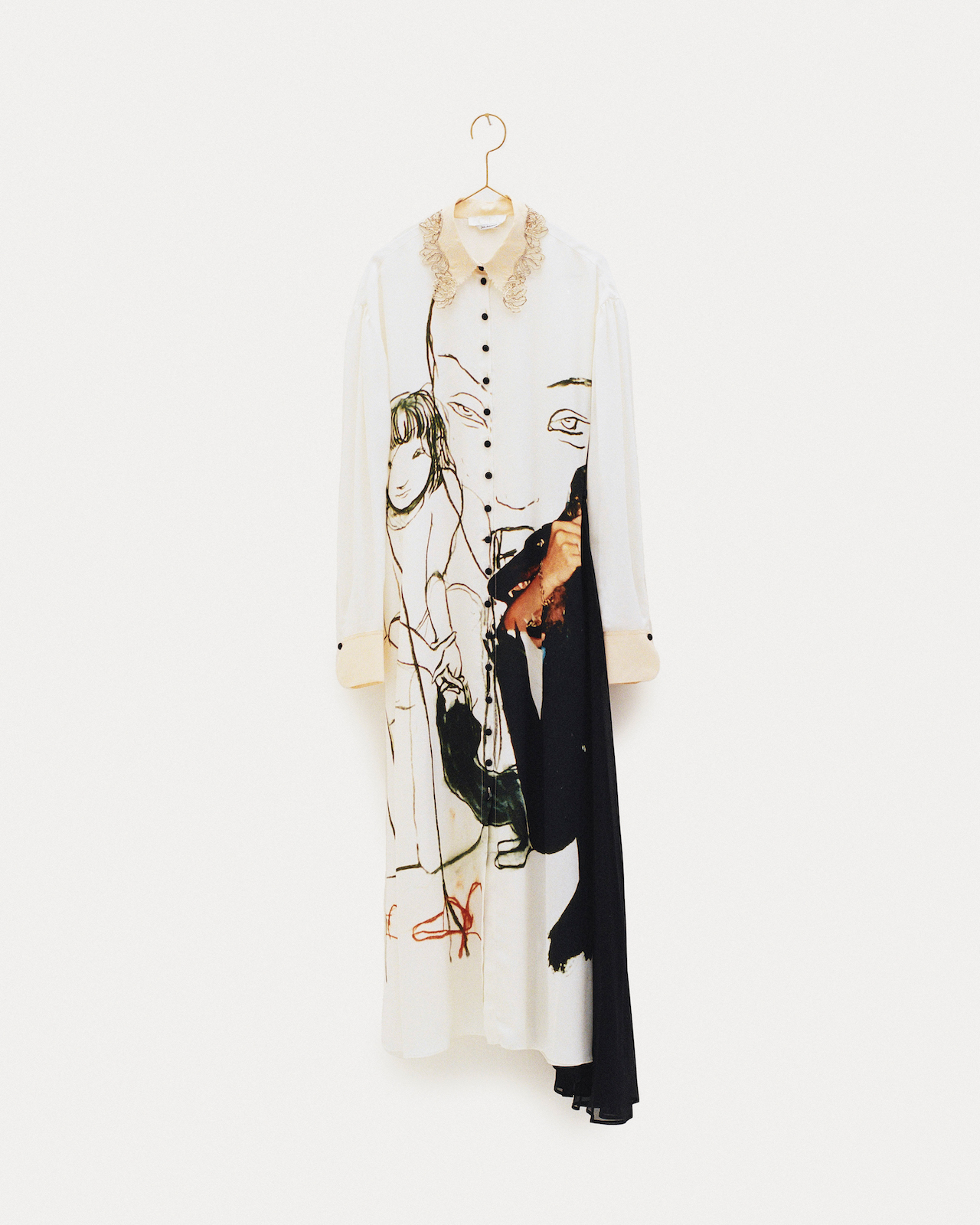

There’s something so quintessentially French about the girlish insouciance of Chloé from the billowing silk pussy-bow blouses to the wild horse prints and sweet broderie anglaise. Even the name sounds like that of some inimitably chic Parisienne who knows her Hélène Cixous from her Luce Irigaray. The Chloé woman is above all smart, cool, and worldly. She’s a woman very much like the six female creative directors who have helmed the label over the past quarter century: Stella McCartney, Phoebe Philo, Hannah MacGibbon, Clare Waight Keller, Natacha Ramsay-Levi, and Gabriela Hearst.
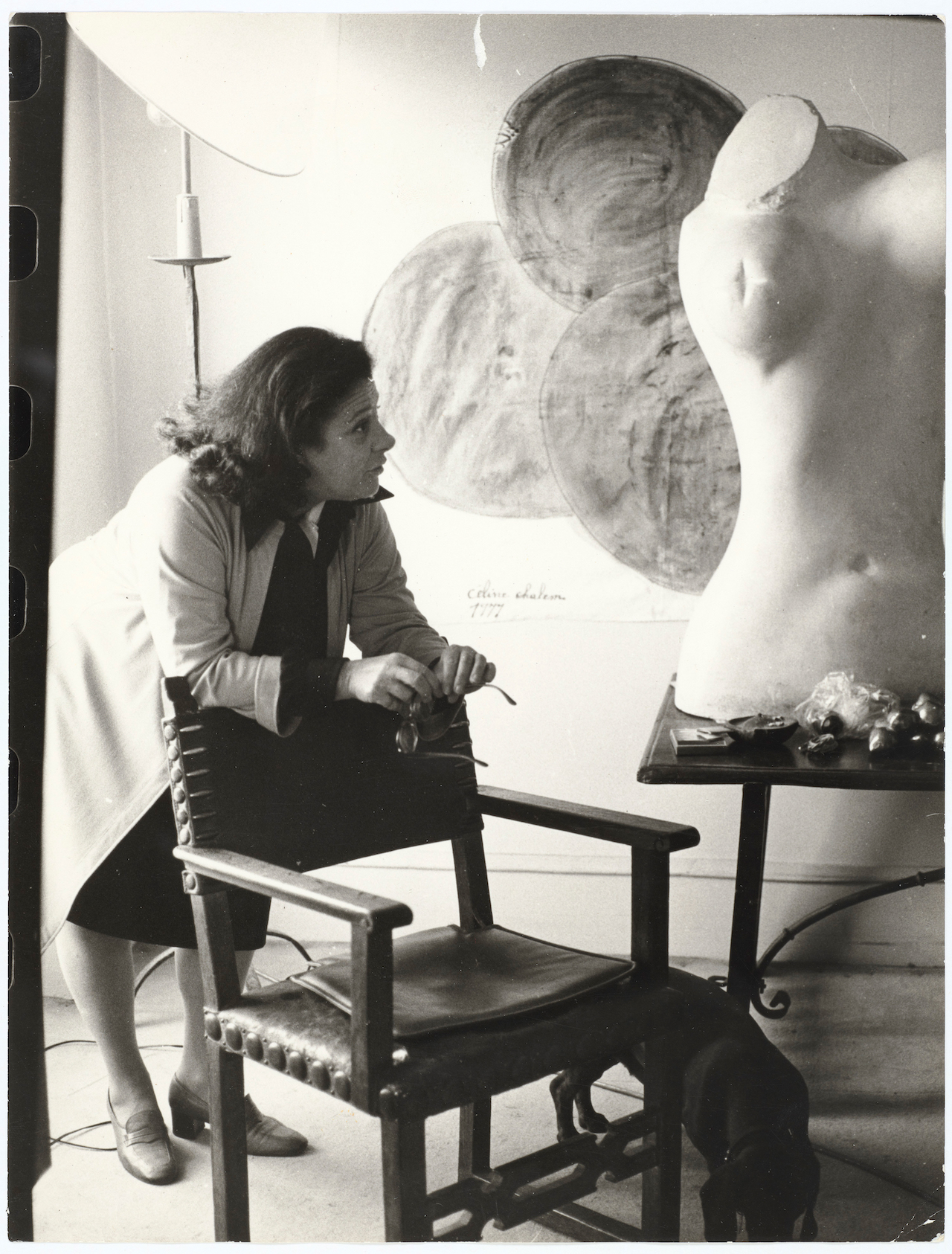
With the exception of Ramsay-Levi, none of the house’s recent creative directors are themselves French (Hearst is Uruguayan American, and the others are British). Perhaps most intriguingly, neither was Chloé founder Gaby Aghion, who died in Paris in 2014 at age 93—at least not initially. A Jew born in Alexandria, Egypt, she immigrated to Paris in the aftermath of World War II and launched Chloé in 1952. Aghion named her label after a friend, Chloé Huysmans, claiming that she liked the elegant roundness of the letters and the youthful femininity the name conveyed.
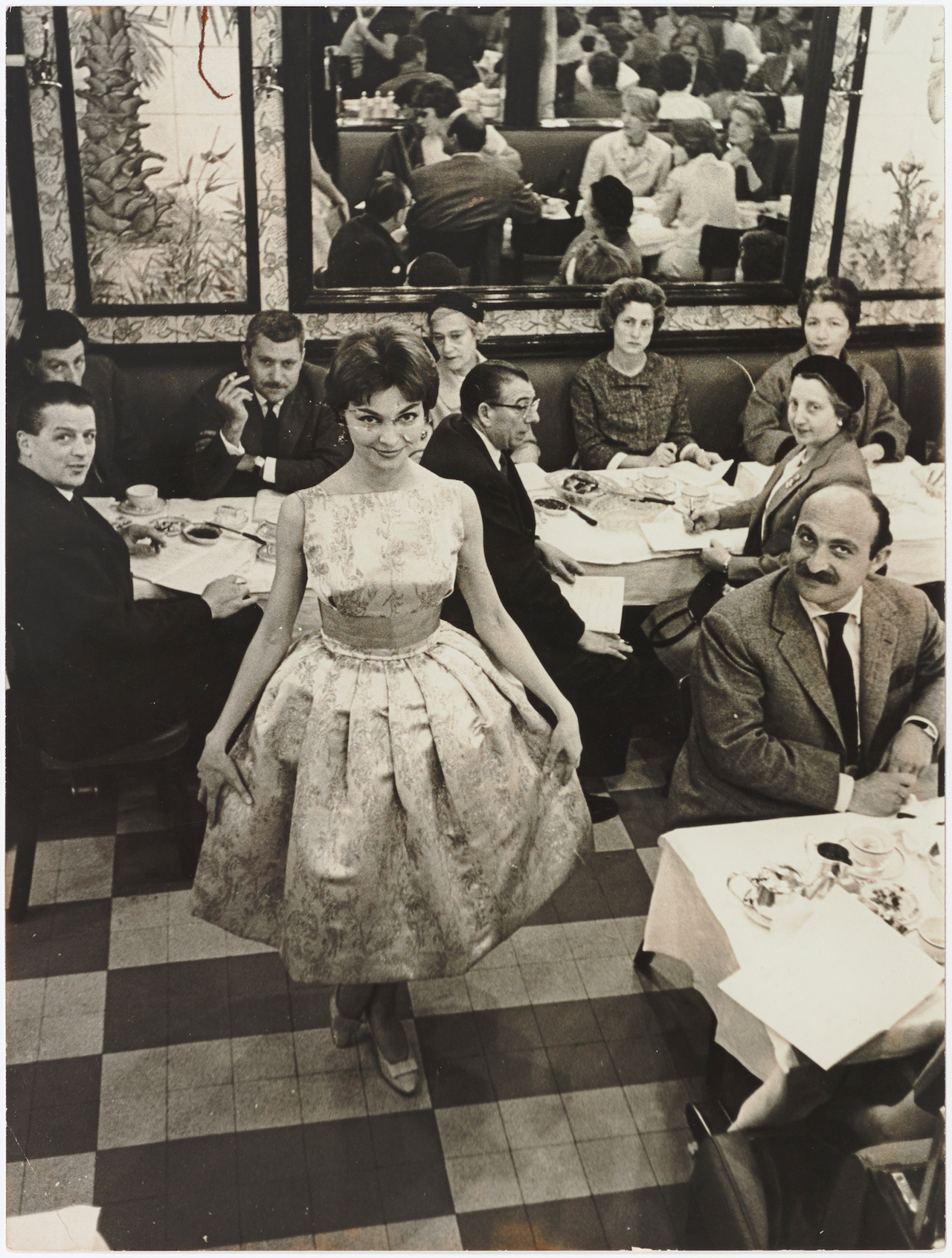
This fall, the Jewish Museum presents “Mood of the Moment: Gaby Aghion and the House of Chloé,” open through February 18, 2024, the first major museum show on the French maison. It tells the forgotten story of Aghion’s Jewish roots and the pivotal role she played in defining the fashion industry as we know it today. The exhibit follows the museum’s recent shows on two path-breaking Jewish creatives: cosmetics entrepreneur Helena Rubinstein and Downtown Gallery founder Edith Halpert, an early champion of modern art icons like Georgia O’Keeffe and Jacob Lawrence. “She’s a visionary woman who changed the course of history,” says director emerita and exhibition project director Claudia Gould on why she selected Aghion for the final installment of this trilogy.
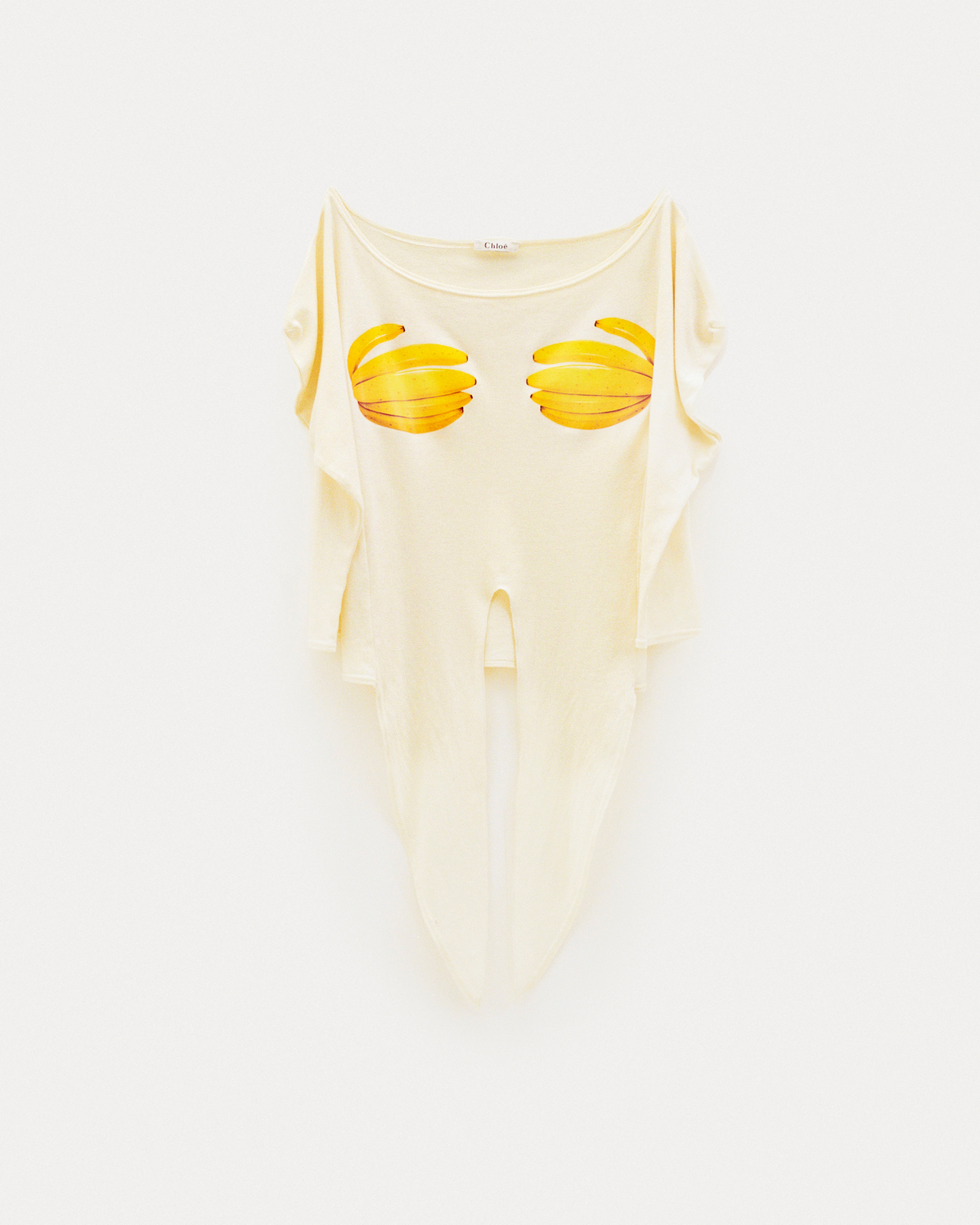
Through personal photos, “Mood of the Moment” charts Aghion’s early years in Egypt and her arrival in Paris, where her husband established an art gallery and the couple were soon welcomed into the Left Bank intelligentsia. Although Aghion had long been interested in fashion and the cafés where she and her friends hung out were only a couple of miles from the haute couture ateliers on Avenue Montaigne, her bourgeois bohemian milieu might as well have been light years away from the hidebound world where couturiers like Christian Dior and Cristóbal Balenciaga created madeto-measure garments for high society.

Nearly a decade before Yves Saint Laurent launched his prêt-à-porter label, Rive Gauche, Aghion began staging fashion shows over croissants and café au lait at her favorite Saint-Germain-des-Prés haunts like Café de Flor and Brasserie Lipp. Models strolled between the tables in order to emphasize the easy movement of little dresses she sold off the rack in nearby boutiques and which were inspired by the lightweight fashions she had worn growing up. “Chloé was always ahead of its time, and the work is actually just very elegant and simple,” says Gould.
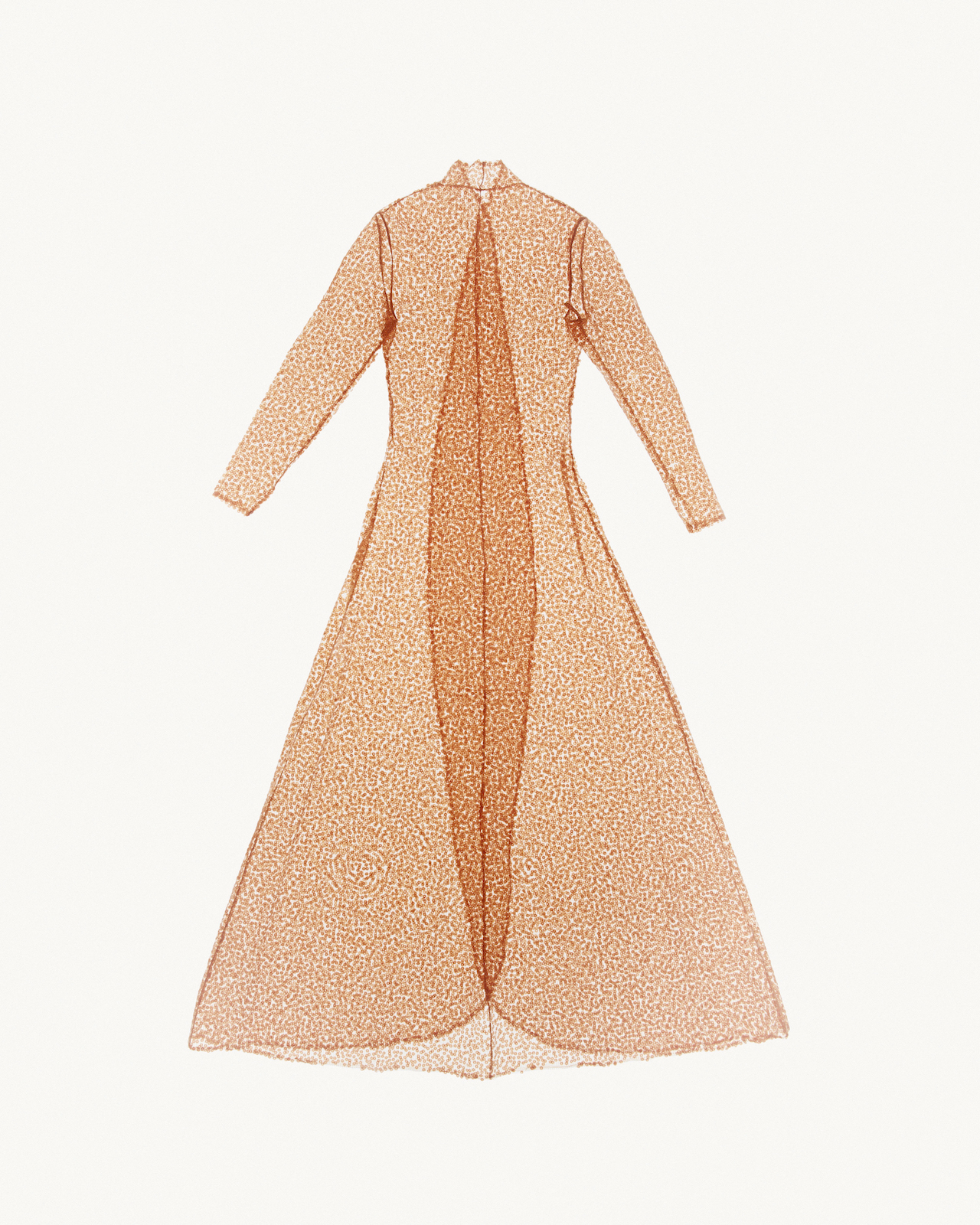
Aghion was the first to admit that she wasn’t a great designer. But she was excellent at defining house codes that resonated with progressive modern women and surrounding herself with a talented design team who could help her riff on them. The house’s longest standing collaboration was with Karl Lagerfeld, who joined the house in 1964 and became its face until he left for Chanel in 1984. The exhibit features nearly 150 garments, including representative examples from each of Chloé’s designers, including a Karl Lagerfeld violin dress, a Stella McCartney banana print T-shirt, and a Phoebe Philo jumpsuit.

The final room in the exhibit is dedicated to the most iconic of all Chloé codes, the pussy-bow blouse (Aghion herself always wore one with a black skirt), and features 50 iterations in soft shades of cream, milk, honey, and gold. The blouses haven’t been steamed, which is an intentional choice so they look as though a woman just took them off. “When you untie the bow there’s a little crinkle,” says Gould. “It shows you’ve lived in it.”
